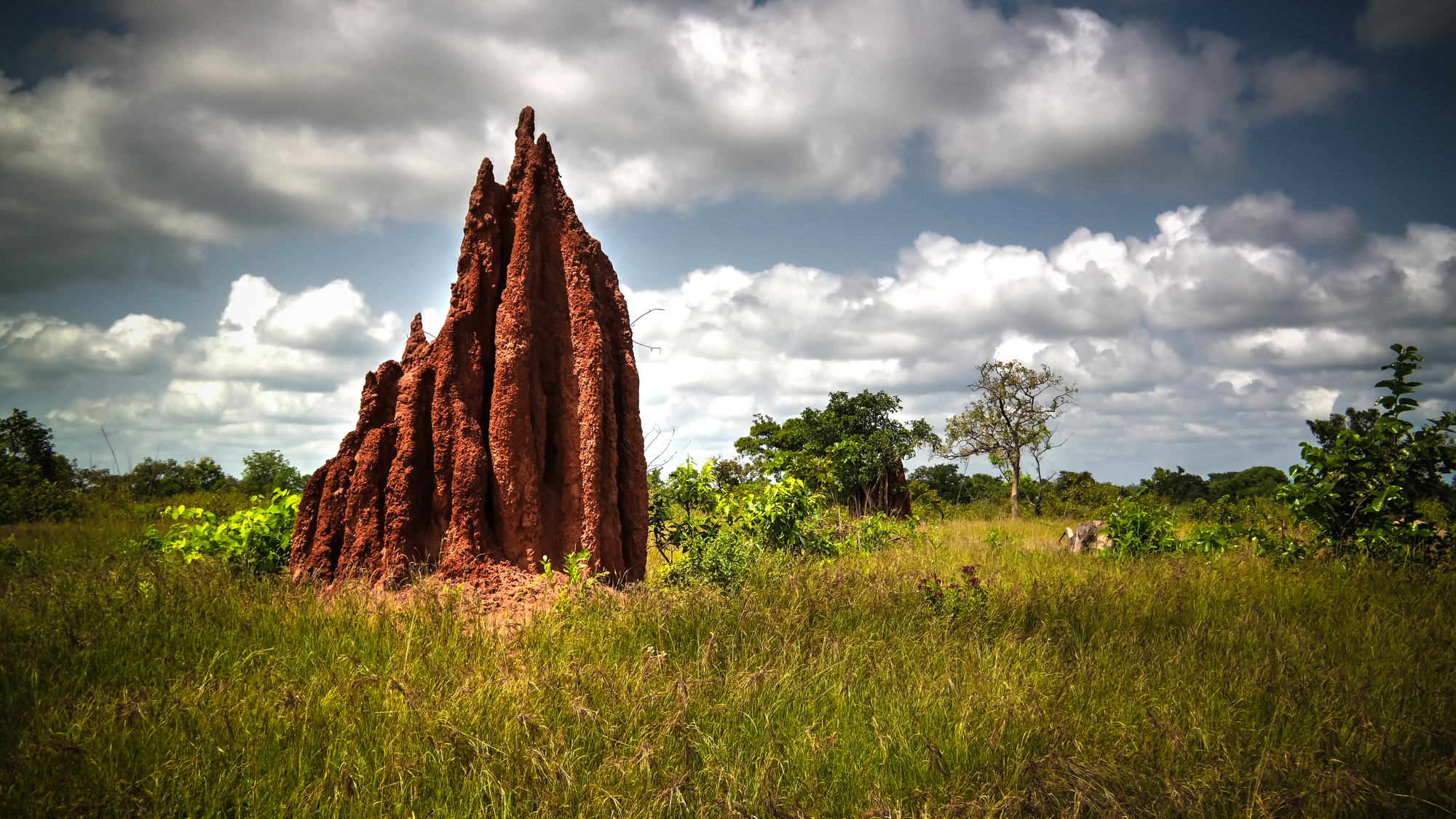

Termites are often thought to be structural pests, but two researchers have taken a slightly contrarian viewpoint. As detailed in a new paper recently published in Frontiers in Materials, David Andréen of Lund University and Rupert Soar of Nottingham Trent University studied termites’ tens of millions of years of architectural experience exhibited within their massive mounds. According to the duo’s findings, the insects’ abilities could inspire a new generation of green, energy efficient architecture.
Termites are responsible for building the tallest biological structures in the world, with the biggest mound ever recorded measuring an astounding 42-feet-high. These insects aren’t randomly building out their homes, however—in fact, the structures are meticulously designed to make the most of the environment around them. Termite mounds in Namibia, for example, rely on intricate, interconnected tunnels known as an “egress complex.” As explained in Frontiers’ announcement, these mounds’ complexes grow northward during the November-to-April rainy season in order to be directly exposed to the midday sun. Throughout the rest of the year, however, termites block these egress tunnels, thus regulating ventilation and moisture levels depending on the season.
To better study the architectural intricacies, Andréen and Soar created a 3D-printed copy of an egress complex fragment. They then used a speaker to simulate winds by sending oscillating amounts of CO2-air mixture through the model while tracking mass transference rates. Turbulence within the mound depended on the frequency of oscillation, which subsequently moved excess moisture and respiratory gasses away from the inner mound.
[Related: Termites work through wood faster when it’s hotter out.]
From there, the team created a series of 2D models of the egress complex. After driving an oscillating amount of water through these lattice-like tunnels via an electromotor, Andréen and Soar found that the machine only needed to move air a few millimeters back-and-forth to force the water throughout the entire model. The researchers discovered termites only need small amounts of wind power to ventilate their mounds’ egress complex.
The researchers believe integrating the egress complex design into future buildings’ walls could create promising green architecture threaded with tiny air passageways. This could hypothetically be accomplished via technology such as powder bed printers alongside low-energy sensors and actuators to move air throughout the structures.
“When ventilating a building, you want to preserve the delicate balance of temperature and humidity created inside, without impeding the movement of stale air outwards and fresh air inwards,” explained Soar, adding the egress complex is “an example of a complicated structure that could solve multiple problems simultaneously: keeping comfort inside our homes, while regulating the flow of respiratory gasses and moisture through the building envelope,” with minimal to no A/C necessary. Once realized, the team believes society may soon see the introduction of “true living, breathing” buildings.
